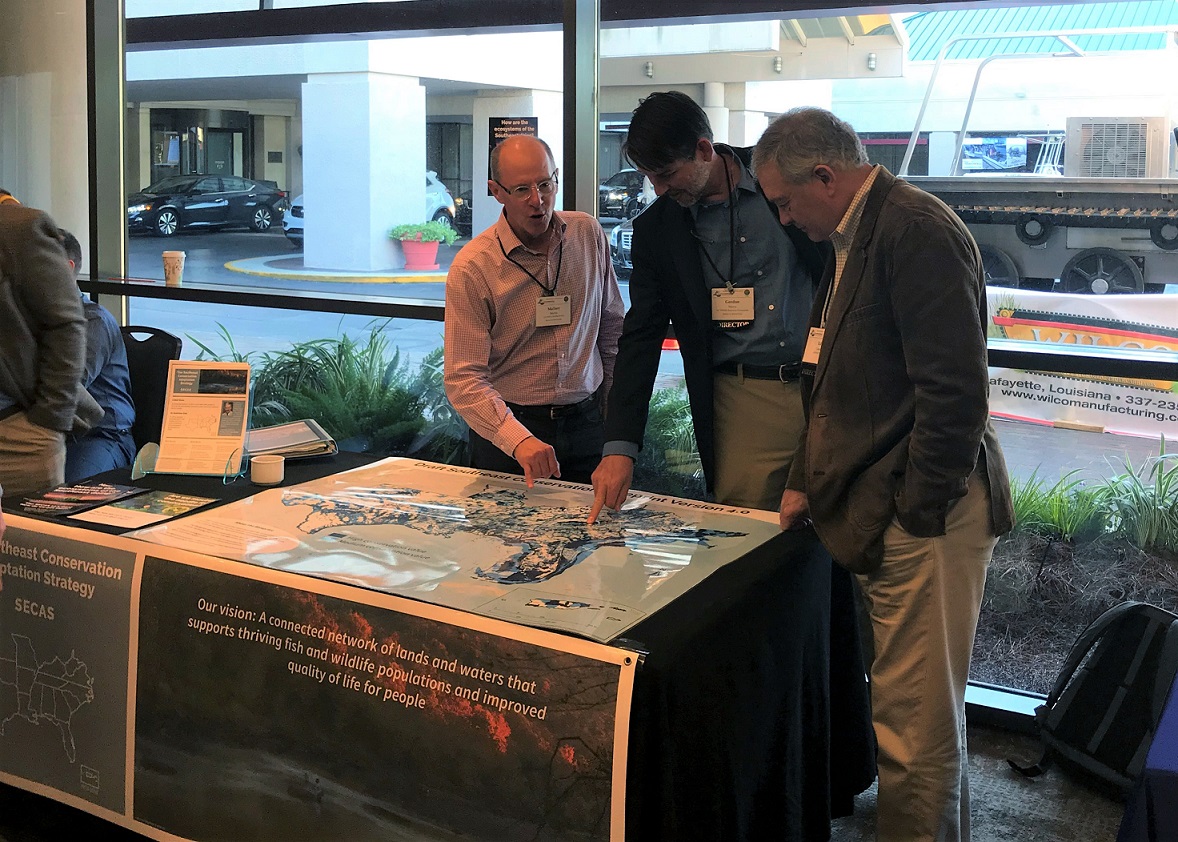SECAS at the Southeastern Association of Fish & Wildlife Agencies (SEAFWA)

The Southeast Conservation Adaptation Strategy (SECAS) was featured prominently at the recent SEAFWA conference in Hilton Head, SC.
Most notably, a half-day symposium attended by more than 75 people focused on in-depth discussion of the SECAS 10% Goal, current conservation accomplishments, baseline status of ecosystem conditions, and trends for reaching the goal by 2060. Much of the background for the symposium’s panel- and facilitated-discussions came from the SECAS goal 2019 progress report entitled Recent Trends in Southeastern Ecosystems: Measuring Progress toward the SECAS Goal, which provides an initial assessment of ecosystem condition using data from existing monitoring programs. Breakout sessions discussed taking bold action to achieve tangible results that will help to advance the SECAS goal, including improving collaboration and communication and identifying critical needs for the initiative. The results of these discussions will help prioritize how SECAS allocates its efforts and capacity during the coming year.
The SECAS Steering Committee, formerly the SECAS Governance Team, met during the conference to discuss broad oversight and strategic guidance for the initiative. The Steering Committee includes representation by five SEAFWA directors, plus the U.S. Fish and Wildlife Service (FWS) representing the federal agencies of the Southeast Natural Resource Leaders Group. Discussion centered around approaches for SECAS to continue its core functions while seeking feedback and perspective on the specific purpose and niche for SECAS as its evolution continues. In support of this effort, the Committee endorsed a cooperative project through the U.S. FWS and the University of Montana Center for Natural Resources and Environmental Policy to help guide the examination to sustain value and clarify direction for SECAS into the future.
Additionally, the Steering Committee recognized an opportunity to increase the diversity of input and perspective helping to guide SECAS by adding additional representatives to the designated Points of Contact (POCs). The goal of this action is to incorporate broader participation in SECAS from other sectors of the conservation community that will help to guide both the core functions and the examination of future direction for SECAS. By the end of this calendar year, three additional POCs will be added from outside the existing state-federal agency representation.
We also had a SECAS exhibit table where we displayed a large printout of Southeast Blueprint Version 4.0 for exploration and comment. The new version generated lots of discussion, particularly recognizing recent improvements in correcting overprioritization, improvements to prioritization in the Lower Mississippi Valley, and expanding marine coverage around Florida.
The exhibit table also gave us a central location to show off a newly updated SECAS factsheet, printed copies of the SECAS goal 2019 progress report, and a place for in-depth discussion of SECAS with a variety of partners throughout the conference.
The SEAFWA conference and its opportunities for engagement with state agency directors, state and federal agency staff, and a broad cross-section of partners provides an ideal springboard for SECAS to continue its momentum and accomplishment into 2020.